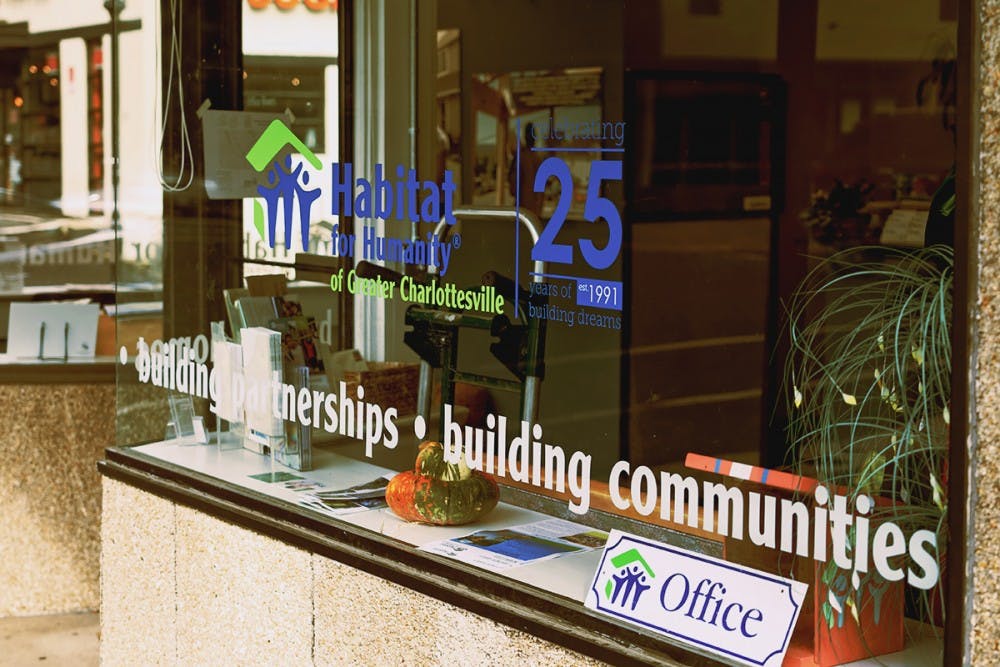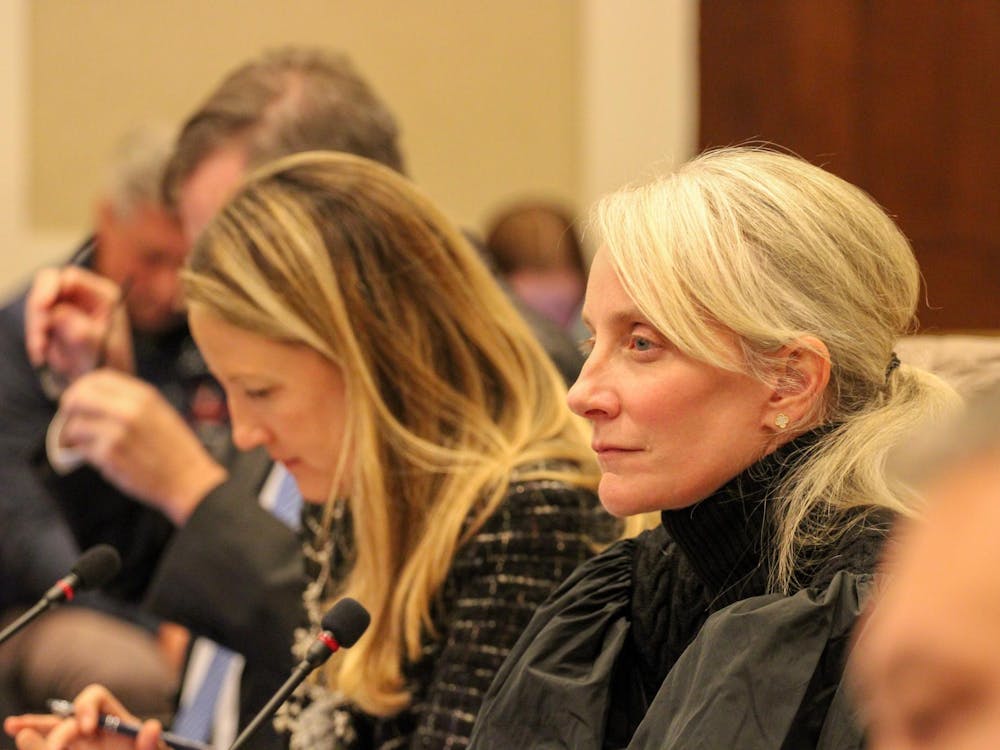Habitat for Humanity of Greater Charlottesville is currently in the process of pursuing de-gentrification in and around the Charlottesville metropolitan area, which includes surrounding Albemarle County as well as nearby Fluvanna, Greene and Nelson Counties.
This is partially due to an annual funding award from the Charlottesville Affordable Housing Fund, the City’s engine for promotion and maintenance of affordable housing units within the area. For this year, Habitat has received about $525,000 from the fund.
Gentrification is a process by which urban areas that are often deteriorating or impoverished are made more attractive to middle-class residents through redevelopment or reconstruction. This process often pushes out long-time, low-income residents by raising property taxes and rent prices. De-gentrification processes reverse this effect by utilizing a variety of methods to increase affordability in urban communities.
Habitat in Charlottesville is a local division of Habitat for Humanity, an international, non-profit organization that builds and rebuilds houses and communities in order to provide low-income families with a variety of pathways to homeownership.
The impetus behind Habitat’s multiple de-gentrification initiatives “is both a quantitative and qualitative one,” according to Dan Rosensweig, the president and CEO of Habitat in Charlottesville. The organization took notice of both the City’s shortage of affordable and low-income housing units and the difficulty buyers faced when trying to acquire these types of housing.
“Not only are we short approximately 4,000 affordable units, but access to homeownership and wealth generation — not to mention neighborhood stability — has been unavailable to people on the economic margins in Charlottesville for generations,” Rosensweig said in an email statement to The Cavalier Daily. Currently, the City is in need of nearly 4,000 affordable units by 2040 to satisfy the existing demand for housing in Charlottesville.
Affordable housing is defined by the U.S. Department of Housing and Urban Development as a unit for which a household pays no more than 30 percent of its income for gross housing costs.
Multiple approaches will be utilized by the organization as they work against gentrification in the City. One of these methods is an existing strategy Habitat uses to acquire properties in gentrifying neighborhoods in order to renovate them and sell them at lower prices to renters in need of more affordable housing situations.
“We are looking to purchase homes in gentrifying neighborhoods from landlords in order to restore them and sell them affordably to their current renters, provided the renters earn between 25% and 60% of area median income,” Rosensweig said.
The City’s area median income is $44,284, with about a third of City residents making between 25 percent and 60 percent of this amount.
In addition to assisting low-income Charlottesville citizens with homeownership through a core home buying program, Habitat is seeking to further establish the Pathways to Housing program as another de-gentrification method. The Pathways initiative got off the ground within the past two years, and is an initiative through which Habitat “works one on one with extremely low income or debt burdened local residents to help them improve their financial situation so that they can stabilize their housing,” Rosensweig said.
Janette Kawachi, the chief partnership officer of Habitat in Charlottesville, said the program focuses more on the pathway to homeownership rather than merely the physical home itself.
“It’s really trying to provide and open up new pathways to affordable homeownership,” Kawachi said. “We want to walk side by side with you to help you get to a point where we know you’ll be successful once you get into the home.”
The program is one that looks different from Habitat’s usual work that focuses on meeting the needs of applicants who have been accepted for future ownership, Kawachi said, due to the fact that it works with individuals who have been denied from Habitat homeownership for a variety of possible reasons — including debt, poor credit or an income that does not meet Habitat’s income threshold.
Habitat in Charlottesville receives anywhere from 180 to 200 applications annually for homeownership through the organization, but has to turn away 80 to 90 percent of applicants for homes due to constructing only 20 homes a year and needing to prioritize those with the greatest need for residence in these homes.
“That didn’t feel good to us,” Kawachi said. “That really opened our eyes to the larger work that we have to do in the community.”
The program will place an emphasis on working with African-American residents around Charlottesville, as Kawachi said that when reviewing applicant data, Habitat staff noticed that a large proportion of applicants were African-American families. The staff conducts “listening sessions,” or one-on-one interviews with these applicants to determine the needs of families in the area and discuss how Habitat can better serve those needs.
“A lot of what has been expressed is a sort of sadness or disappointment with what has happened to their communities,” Kawachi said. “There are long time families here who have lived here for multiple generations, notably African-American … and there’s a strong notion that they’re being pushed out.”
Given this feedback from applicants, Kawachi said, a large part of the money Habitat is receiving through CAHF will go towards their existing work of buying homes in neighborhoods — particularly historically African-American neighborhoods in or immediately around Charlottesville including Fifeville and Prospect — renovating them and selling them at affordable prices. This is so Habitat can better fit the needs of these African-American applicants and give a sense of place and community feeling back to their families.
“If they had an opportunity, if they had a next step, which is affordable rentals in the neighborhood, then they would gladly move out,” Kawachi said. “But once you leave that public housing realm, it’s a big jump between what you pay for rent there and what you’d have to pay in the market. There’s really nothing available for them.”
Habitat in Charlottesville has also changed their needs criteria — a set of requirements applicants must meet in order to be approved for a Habitat-constructed home — in the past year. Some of these criteria include asking applicants if they have a housing problem, if they are homeless, what their income is and what their credit and debt are. This is also due to the fact that when, upon analysis, Habitat’s staff noticed that some areas of the needs criteria unintentionally eliminated African-American applicants for consideration.
“We're noticing that, unintentionally, a lot of our needs criteria were filtering out long-time African-American residents specifically,” Kawachi said. “So our underwritings standards are requirements for [good] credit and debt, and that was what was screening out a lot of African-American applicants.”
Habitat in Charlottesville’s funding comes from a variety of places outside CAHF. This includes money from private donors and foundations and working with government agencies to maximize efficient allocation of funds, but also through several Habitat-sponsored initiatives as well.
“Partner Family homeowners pay a mortgage that “pays it forward” to support the next families,” Rosensweig said. “Our Habitat Store sells donated and salvaged home goods to support our operations.”
To some University students and community members, conversations and initiatives like these may not seem immediately relevant. However, Kawachi acknowledged the University does have a role to play, as the availability of on-Grounds student housing options does not align with rising enrollment. The University currently has 6,540 beds in its housing system, with approximately half of those being allotted specifically for first-year students. This leaves about 3,000 beds for second- through fourth-year students, the population of which is about 13,000 students.
“My understanding is that enrollment is going up, but on-campus student housing isn’t going up at the same rate,” Kawachi said, adding that while the University has a role to play, she doesn’t “want to say that it’s so simple that it’s like, ‘this is the University’s fault’ or something like that.”
Only first-year students are required to live on Grounds, although the University is currently constructing additional upperclassmen housing on Brandon Avenue.
While the housing market in Charlottesville is a complex stream to navigate with few directly distinguishable causes or solutions, Kawachi said that Habitat hopes that the University will both recognize and fulfill the role it has in the conversation around affordable housing in Charlottesville.
“Our hope is that U.Va. becomes a partner in thinking through some of the challenges that we are experiencing in the community around affordable housing,” Kawachi said.







